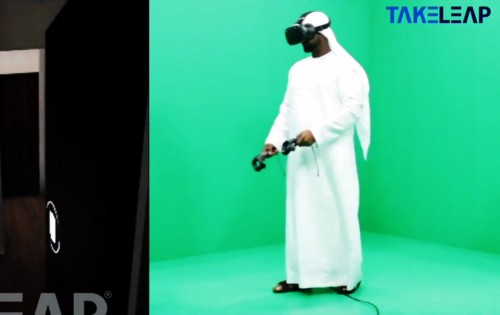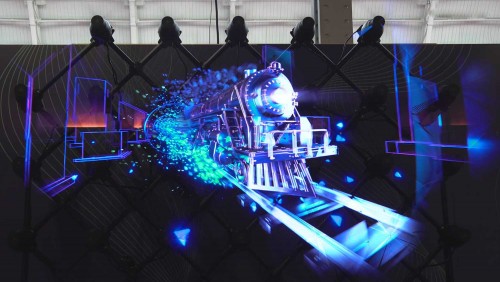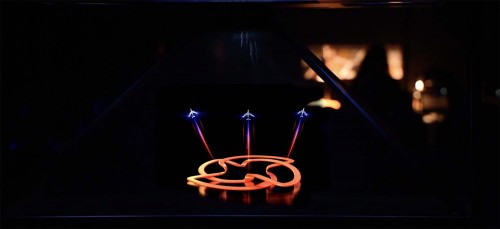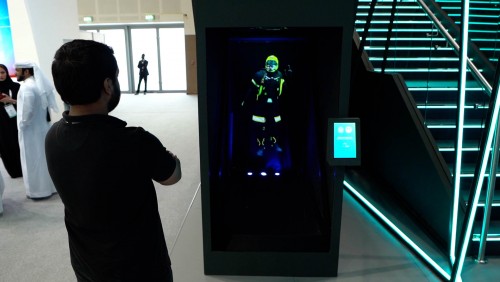The Future of Office Holograms: How It Is Changing the Way We Work

What is a Virtual Office Hologram?
What is a virtual office hologram? Essentially, it's a 3D-Projection of the person’s head and upper body. It is used for business meetings in which people are in different parts of the world, or even on different continents. The holographic projection can be projected from a screen or beamed from an actual object placed in front of it.
How Can Office Holograms Streamline Workflows?
Virtual office holograms offer a host of benefits for both employees and employers. For example, they eliminate the need for real-time meetings with colleagues that are located in different cities or even different countries. With this technology, you can see your colleagues in an entirely new light; they are not just voice over a webcam or on the other end of an email thread. Instead, you’re able to see their facial expressions and body language as if they were right in front of you. This kind of communication is more effective than any other form of virtual collaboration and eliminates the risk that your messages will go unread or misunderstood. The ability to have face-to-face conversations with people who are not physically located nearby is invaluable for businesses that rely heavily on face-to-face interactions. For example, if you're trying to sell a product or service to a client, it's important to be able to demonstrate the product or service in person so they fully understand what they are buying. Virtual office holograms allow employees who live far away from headquarters the opportunity to "pop up" at headquarters anytime they want--without having to fly across town or across the world! This means that no matter where your colleague happens to be working from today, tomorrow, or next week--they can be there when you need them most.
What Are the Drawbacks of Using Office Holograms?
The major drawback of office holograms is that they are a fairly new technology. As such, there are some limitations to their use. For example, they can’t be used to include multiple people in the same meeting space. Additionally, holograms cannot yet be used to host a meeting with people over a long distance; this requires video conferencing which can be both more expensive and difficult to set up than office holograms. Despite these drawbacks, it is likely that we will continue experimenting with office holograms as a way to streamline our workflows and make things more efficient for our employees. We should anticipate an increase in the use of this technology in the future - especially as virtual reality becomes more advanced and refined.
The Future of Virtual and Augmented Reality for Offices
Virtual reality is a powerful tool for creating immersive experiences. In the future, we will no doubt see more businesses taking advantage of this technology to boost productivity and improve their workflow. There are a number of ways that VR can be used in the office space. For example, VR can be utilized for remote work and telecommuting, which has been on the rise in recent years. In fact, according to Cisco’s predictions from 2017, by 2022 as many as 9 billion out of 14 billion new jobs will require employees to perform a certain amount of work remotely. VR is an excellent way to make this happen, since it creates a virtual environment where employees can carry out their tasks while feeling like they are still in the office. With VR, you can recreate your workplace virtually with all the furniture and equipment you need in order to have an authentic experience. Another way that VR can be employed in offices is through interactive 360° images which allow users to explore a location before visiting it or even doing due diligence on it before investing in it on behalf of their company. This type of technology has been used by real estate agents for decades but now we are seeing aspects of it cross over into other industries too as people become more accustomed to using this type of interface. Augmented reality could also be utilized by businesses in the future as well; however, there are currently quite limited options available for augmented reality headsets at an affordable price point for business use.
The Bottom Line
Virtual office holograms are still a relatively new technology that has the potential to change the way we work. Traditional video conferencing can be expensive and complex, but virtual office holograms offer businesses a more affordable and accessible way to improve internal communications. It’s not clear yet how office holograms will be used or how their popularity will change in the future. But there are many reasons to believe that they could become as ubiquitous in offices as teleconferencing is today.







 Call
Call
 Mail
Mail